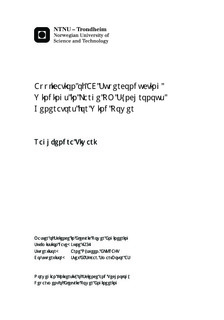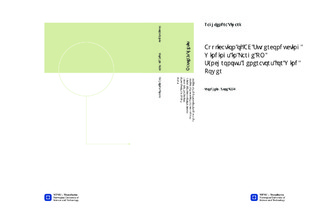| dc.contributor.advisor | Nysveen, Arne | nb_NO |
| dc.contributor.advisor | Skaar, Stev E. | nb_NO |
| dc.contributor.author | Tiwari, Raghbendra | nb_NO |
| dc.date.accessioned | 2014-12-19T13:53:17Z | |
| dc.date.available | 2014-12-19T13:53:17Z | |
| dc.date.created | 2012-11-08 | nb_NO |
| dc.date.issued | 2012 | nb_NO |
| dc.identifier | 565807 | nb_NO |
| dc.identifier | ntnudaim:8347 | nb_NO |
| dc.identifier.uri | http://hdl.handle.net/11250/257268 | |
| dc.description.abstract | Superconductors are known for carrying very high current density without any loss of energy. This characteristic helps to achieve very high power capacity with compact size of machine. In application of superconductors, the main obstacle has been the cooling of the conductors since it operates at very low temperatures below ambient. After the discovery of high temperature superconductor (HTS) in 1986, several prototype machines have been built using in DC field winding. The application of superconductor in AC armature winding has not been feasible due to excessive AC losses. These losses are caused due to penetration of time varying magnetic field. This thesis concerns the possibility of the application of superconductor in armature windings of permanent magnet synchronous generator. A 10 MW wind power generator with copper winding has been taken as reference machine and the machine has been redesigned with several pole-slot combinations using superconductor. Permanent magnet has been used as the source of field. Three alternatives have been designed with superconductor in armature winding and the machine with 176 poles, 192 slots has been selected as the best among them based upon the active weight of the generator, outer volume, utilization factor, power factor, full load losses, and total harmonic distortion and cogging torque. The selected machine has been found to be 62 ton in weight where as that of reference machine is 90 ton. Moreover, the outer volume of the superconducting machine is about 2.5 times lesser than that of the copper winding reference machine. The reduction in volume of generator will consequently reduce the volume of nacelle and the reduction in weight will reduce the transportation cost. The major reference of comparison has been the utilization factor of the machines which is 110 kN•m/m3 for the proposed superconducting machine whereas that for reference machine has been 44.6 kN•m/m3. The total loss in superconducting machine has not been calculated due to unavailability of actual AC losses in superconductors. Therefore, a tolerable limit of AC losses has been calculated using the losses incurred by the reference machine which is 0.82 mW/A•m at 20 K when a perpendicular AC field of 0.39 T is applied. Normalized AC losses lower than this value will make the superconducting machine to possess lower loss in comparison to reference machine. Some measures to improve the power factor of superconducting machine by increasing the thickness of magnet have also been studied. It has been found that an increase by 20 mm of additional layer of magnet makes the proposed superconducting machine to have better power factor than the reference machine. Hence, the SC machine consumes less reactive power from the grid and needs a smaller power electronic converter in the system. In this work, it has been put forth that permanent magnet synchronous generators with AC superconductors will make a system compact in size and weight provided AC superconductors with lower losses than aforementioned value are manufactured. | nb_NO |
| dc.language | eng | nb_NO |
| dc.publisher | Institutt for elkraftteknikk | nb_NO |
| dc.subject | ntnudaim:8347 | no_NO |
| dc.subject | MSELPOWER Master of Science in Electric Power Engineering | no_NO |
| dc.title | Application of AC Superconducting Windings in Large PM Synchronous Generators for Wind Power | nb_NO |
| dc.type | Master thesis | nb_NO |
| dc.source.pagenumber | 154 | nb_NO |
| dc.contributor.department | Norges teknisk-naturvitenskapelige universitet, Fakultet for informasjonsteknologi, matematikk og elektroteknikk, Institutt for elkraftteknikk | nb_NO |

